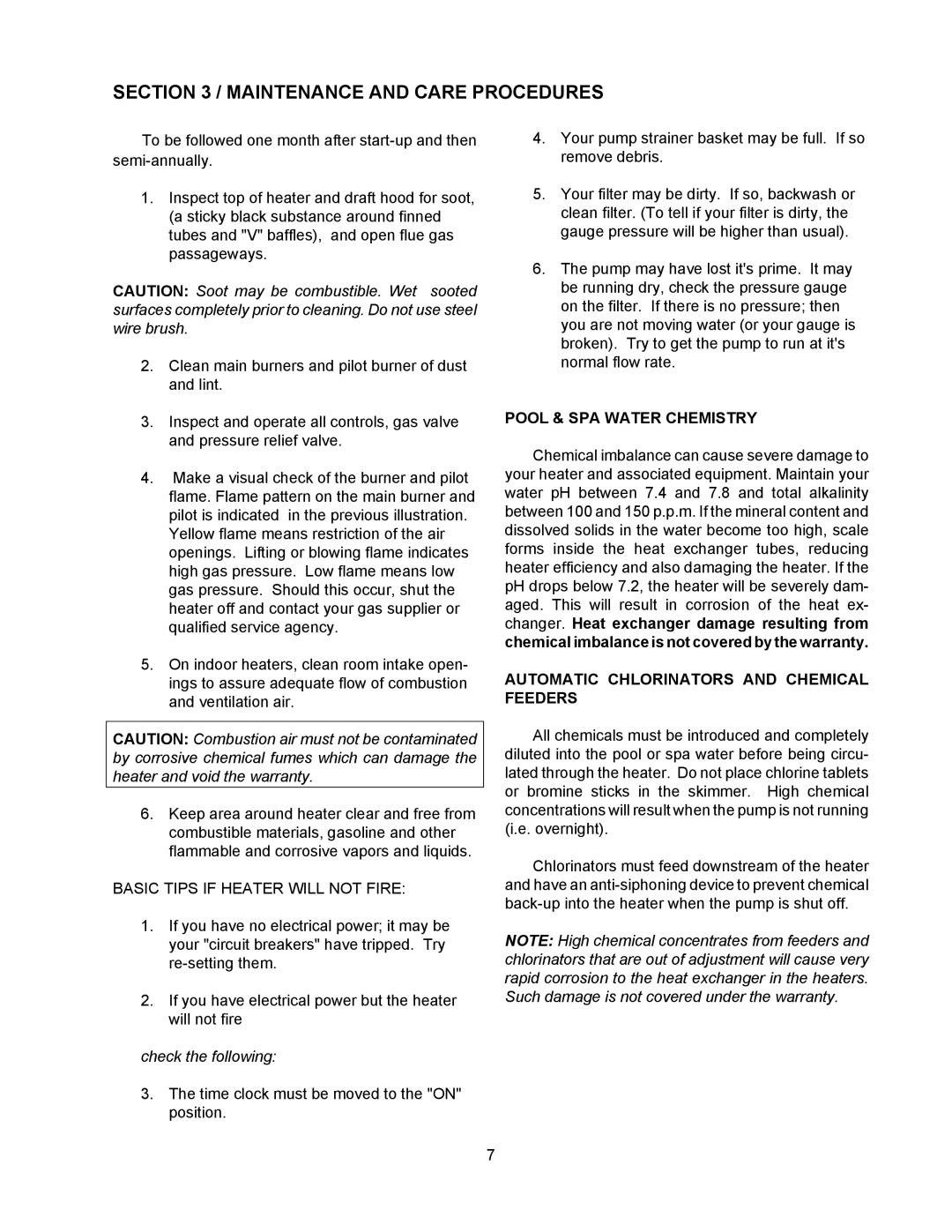155C specifications
The Raypak 155C is a versatile and efficient heater designed for both residential and commercial applications. Renowned for its robust construction and reliable performance, this unit is an excellent choice for pool and spa heating as well as for providing comfortable ambient temperatures in enclosed or outdoor spaces.One of the standout features of the Raypak 155C is its innovative copper heat exchanger, which is designed for maximum heat transfer efficiency. This technology allows for rapid heating capabilities, ensuring that water reaches the desired temperature quickly and effectively. The heat exchanger is also resistant to corrosion, thanks to its durable design, prolonging the unit's life and maintaining performance over time.
Designed with user convenience in mind, the Raypak 155C features an intuitive digital control system. This user-friendly interface allows for easy temperature adjustments and monitoring, giving users precise control over their heating requirements. An integrated diagnostic system is also included, providing real-time feedback on the heater's performance and alerting users to any potential issues, which helps in proactive maintenance.
Incorporating advanced safety features, the Raypak 155C includes a high limit switch and a water flow switch, ensuring safe operation at all times. These safety mechanisms prevent overheating and dry firing, protecting both the heater and the connected plumbing system.
The Raypak 155C is engineered for energy efficiency, meeting and exceeding industry standards. With a compact design, it ensures easy installation and integration into existing setups, making it a favorable choice for various applications. Its quiet operation adds to user comfort, allowing it to be installed in residential settings without causing disturbances.
With a heating capacity of 155,000 BTU, the Raypak 155C is capable of effectively heating larger pools and spas, making it ideal for homes with extensive water features. The heater is designed to run on natural gas or propane, providing flexibility based on user preferences and availability.
Overall, the Raypak 155C combines state-of-the-art technology with practical features, making it one of the top choices for those looking to enhance their pool experience or improve comfort levels in their outdoor areas. Its reliability, efficiency, and user-friendly features make it a valuable investment for any property.

